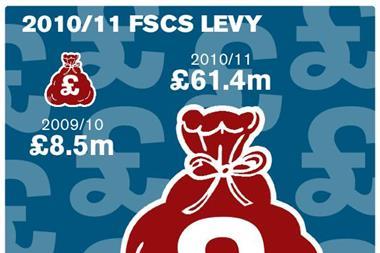What happened and what’s ahead for M&A, aggregator sites and broker networks
Trends in broking move in waves. From the crest of the consolidation surge in 2006, broker mergers and acquisitions fell into a trough in 2008-09 before picking up again last year.
Deal-making has taken a different turn, with fewer, bigger deals now more characteristic of the marketplace than the smaller bolt-ons that dominated a few years ago.
Arthur J Gallagher’s takeover of Heath Lambert kick-started this new wave of mega-consolidations. The nationals could strike some big deals next year.
Broker networks have also risen and fallen in terms of how they are regarded in the industry, both by brokers and insurers. The conclusion many have reached is that networks need to show they add value for insurers.
Some insurers have even rejected the networks mode, regarding it as a more costly and less efficient way of doing business with intermediaries.
In 2008, Aviva showed its preference for working directly with brokers, and in 2009 AXA’s network review was part of a wider trend contributing to a decline in the number of brokers joining networks.
The year ahead could see brokers facing more of a threat from aggregators as the trend for online purchase of micro-SME policies continues to take hold. Broker houses that are able to embrace the new technology could gain a competitive advantage.
Meanwhile, a focus on consumer relations is also becoming increasingly important as brokers aim to communicate to customers the value they add.
Mergers and acquisitions
Consolidation in the broker market had picked up speed during the mid-noughties, but was forced to brake suddenly when money markets dried up. Activity resumed somewhat towards the end of 2010: Gallagher’s takeover of Heath Lambert has been the big story in 2011.
What’s next: While there may be deals bubbling under, not many have made it to the surface during 2011. Price has been a sticking point. Therefore, pent-up potential is there for next year. Towergate has a £200m warchest ready to go, and rumours of a tie-up between Giles and Oval continue.
Aggregator sites
Threat or opportunity? The jury’s still out on what aggregators mean for brokers. But even as some intermediaries find innovative ways to use new technology, the fear is that the decimation of business experienced in personal lines will be repeated in the commoditised micro-SME sector.
What’s next: Those companies prepared to invest in developing technology for an increasingly tech-savvy consumer base will reap the benefits. Mobile purchasing options, such as those mooted by iGO4, could proliferate, as could ‘real-time pricing’ comparison sites as the technology becomes available.
Network rivalry
The gold rush towards broker networks may have slowed down, but the scene remains competitive and member poaching is on the rise.
What’s next: Our sentiment survey indicates that brokers’ overriding feeling is that consolidation will continue to be a part of the broker landscape during 2012. This could result in more brokers populating fewer, bigger networks. Networks with an underwriting authority may emerge as having a stronger competitive advantage.
Hosted by comedian and actor Tom Allen, 34 Gold, 23 Silver and 22 Bronze awards were handed out across an amazing 34 categories recognising brilliance and innovation right across the breadth of UK general insurance.














































No comments yet